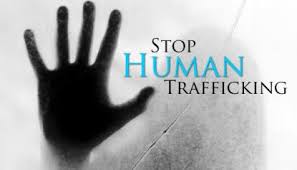In order to have full access of this Article, please email us on thedocumentco@hotmail.co.uk
Introduction
TRAFFICKING IN HUMAN BEINGS, When people are forced, or lured into exploitation regardless of the movements of the victims being involved, is considered to be the modern definition of human trafficking. Mostly, the economic vulnerabilities in a state force the victims to accept such exploitative working arrangements.
On an average, a minimum of 12.5 million people can be assumed to be the subject to exploitation annually. Amongst these, conservatively estimated that at least a minimum 2.5 million of men, women and children are lured and forced and are trafficked across international borders. Many more are made and put to work against their will by being kept under financial threats and physical and psychological abuse. And the conditions in which they are kept are often unsafe and deplorable. (Koetll, May 2009)
While it is agreed that many forms of exploitation have an underlying force of coercion and deception, not all forms of exploitation are involuntary. Many people allow themselves to be exploited because of the lack of the other economic opportunities available to them. They are left with no choice but to enter prostitution or any other form of exploitation to provide their families or children with the basic necessities of life.

The key to deception lies in the threats to coerce the victims of exploitation and it usually takes a variety of forms. Most of the threats include the victims’ threat against his or her life. Others include threats against their lands, properties, personal safety or safety of their families. Usually what happens is that the victims are led and lured into traps by being misinformed about their rights and are provided false and misleading information and false promises.
Most exploitation is perpetrated by private agents. Some forms of exploitation are also state enforced, such as forced prison work and forced military service. The U.S. government exemplifies human trafficking as the larger issue in its annual Trafficking in person report. It clearly stated that any form of forced labour and transnational human trafficking, in which human being is being exploited abroad, are still characterized as subsets of human trafficking. (U.S. Department of State, 2001-2007)
Many people are unable to legally enter developed countries like Western Europe and the United States, so the formation of human smuggling rings run by international organized crime groups have emerged to meet the increasing demands of people wishing to enter these kind of states illegally. Operating internationally, these groups have exploited various markets illicitly in different categories like drugs, people, arms, and diamonds. This is termed as the shadow economy.
Globalization has impoverished many communities in the developing world, forcing people to engage in illicit activities to survive. (Bales, 2000) In many conflict regions, the shadow economy is the only functioning economy. In many states, trafficked victims are used to smuggle drugs in their bodies, securing the protection of the crime group if in case the victim gets caught and prosecuted. However, traffickers and crime groups of the drug trade or others are often in liaison with corrupt law enforcing officials and border guards. (Shelley, 2005)
Violence Conducted to Exploited Victims
Child victims of human trafficking are forced, induced, or coerced into providing labour, services, or commercial sex. A trafficked child is compelled to engage in illegal activities such as prostitution or the selling and trafficking of drugs. When caught, instead of being treated as victims, many are treated as criminals and are prosecuted accordingly with no way of proving themselves innocent or providing any witnesses. A prosecution can further traumatize the victim as well as leave him or her with a profound distrust of law enforcement, which can prevent victims from crying out for help-seeking assistance, as most of the time the officials are also involved with the trafficking business. Furthermore, the criminal record that results from being prosecuted can act as a barrier to future employment and other opportunities. (Polaris, 2014)…

Recent Comments